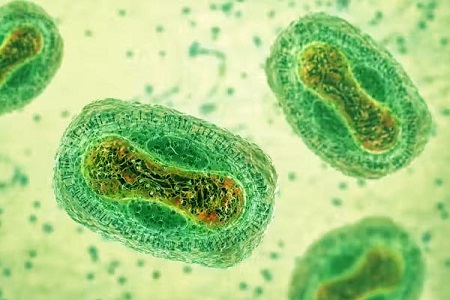Nuclear signal in Monkeypox (Mpox) virus protein P2 is key to immune system evasion
James Josh Fact checked by:Thailand Medical News Team Sep 04, 2024 6 months, 3 weeks, 6 days, 18 hours, 57 minutes ago
Medical News: Researchers from a collaboration of institutions, including the Chinese Academy of Sciences, Guangxi University-China, University of Oxford-UK, and Henan University-China, have uncovered critical insights into how the monkeypox virus (MPXV) manipulates the human immune system. This
Medical News report dives into their findings, focusing on the role of a specific nuclear localization signal (NLS) in the monkeypox virus protein P2 and its orthologues in inhibiting the immune response. These findings are pivotal in understanding how MPXV and related viruses evade the host’s innate immunity, a discovery that could lead to better therapeutic strategies and vaccine development.
 Nuclear signal in Monkeypox (Mpox) virus protein P2 is key to immune system evasion
The Critical Role of the Nuclear Localization Signal
Nuclear signal in Monkeypox (Mpox) virus protein P2 is key to immune system evasion
The Critical Role of the Nuclear Localization Signal
The study reveals that the P2 protein of the monkeypox virus contains a nuclear localization signal (NLS) crucial for its ability to suppress the immune system. The NLS allows the P2 protein to enter the cell nucleus, where it interacts with a host protein called karyopherin alpha-2 (KPNA2). This interaction is vital for the P2 protein to inhibit the nuclear translocation of interferon regulatory factor 3 (IRF3), a key player in the body’s antiviral defense mechanism. Without this signal, the immune system could more effectively respond to the virus, reducing the virus’s ability to replicate and cause disease.
Study Findings on the Importance of NLS
The research team discovered that when the NLS was deleted from the P2 protein, the virus’s ability to inhibit IRF3 translocation and evade the immune response was significantly reduced. This deletion not only diminished the virus’s capacity to replicate but also attenuated its virulence in mouse models. These findings suggest that the NLS in P2 is a critical factor in the monkeypox virus’s ability to suppress the immune system and enhance its replication within the host.
Further investigation into orthologues of the P2 protein across various Orthopoxviruses (OPXVs), such as variola virus (VARV), vaccinia virus (VACV), and others, showed similar mechanisms. However, orthologues in camelpox virus (CMLV) and taterapox virus (TATV), which lack this nuclear localization signal, were less effective at inhibiting IRF3 translocation, highlighting the unique role of the NLS in these viral proteins.
Mechanism of NLS-Mediated Immune Suppression
The researchers demonstrated that the NLS in MPXV P2 facilitates the interaction with KPNA2, which is essential for the nuclear import of the P2 protein. This interaction inhibits the nuclear import of IRF3, thereby blocking the production of interferon (IFN), a critical molecule in the antiviral response. The study found that when the NLS was deleted or mutated, the P2 protein could no longer interact with KPNA2, resulting in the restoration of IRF3’s nuclear translocation and subsequent activation of the immune response.
Broa
der Implications for Orthopoxvirus Research
This study also expands the understanding of how other OPXVs manipulate host immunity. The conservation of the NLS in P2 orthologues across different OPXVs, except for those in CMLV and TATV, suggests that this mechanism is a common strategy among these viruses to evade immune detection. The deletion of NLS in attenuated vaccine strains of VACV, such as the Tian Tan strain and modified vaccinia Ankara (MVA), further supports the role of NLS in viral virulence.
The findings imply that targeting the NLS or the interaction between P2 and KPNA2 could be a promising strategy for developing new antiviral therapies. The use of small molecule inhibitors which can block KPNA2 interactions, could potentially restore the immune system’s ability to fight off these viral infections effectively.
Conclusion
In conclusion, this research highlights the critical role of the nuclear localization signal in the P2 protein of the monkeypox virus and its orthologues in evading the host’s immune response. By facilitating the nuclear import of P2, the NLS disrupts the normal function of IRF3, thereby suppressing the production of interferons and other antiviral molecules. This mechanism is crucial for the virus’s ability to replicate and cause disease, making it a potential target for therapeutic intervention.
The study findings were published in the peer-reviewed journal: Emerging Microbes & Infections.
https://www.tandfonline.com/doi/full/10.1080/22221751.2024.2372344#abstract
For the latest Mpox News, keep on logging to Thailand
Medical News.
Read Also:
https://www.thailandmedical.news/news/the-f17-protein-of-all-poxviruses-including-mpox-counteracts-mitochondrially-orchestrated-antiviral-responses
https://www.thailandmedical.news/news/mpox-evades-the-human-immune-system-by-having-its-viral-protein-m2-bind-to-host-b7-1-and-b7-2-proteins
https://www.thailandmedical.news/news/study-discovers-that-mpox-virus-protein-h3l-induces-transcriptional-perturbations-and-cellular-injuries
https://www.thailandmedical.news/news/the-structural-and-functional-insights-of-the-e5-helicase-protein-of-the-mpox-virus
https://www.thailandmedical.news/news/the-mpox-virus-s-f3-protein-triggers-immune-responses-and-apoptosis
https://www.thailandmedical.news/news/unveiling-the-role-of-monkeypox-mpox-virus-a23-protein-in-human-cells
